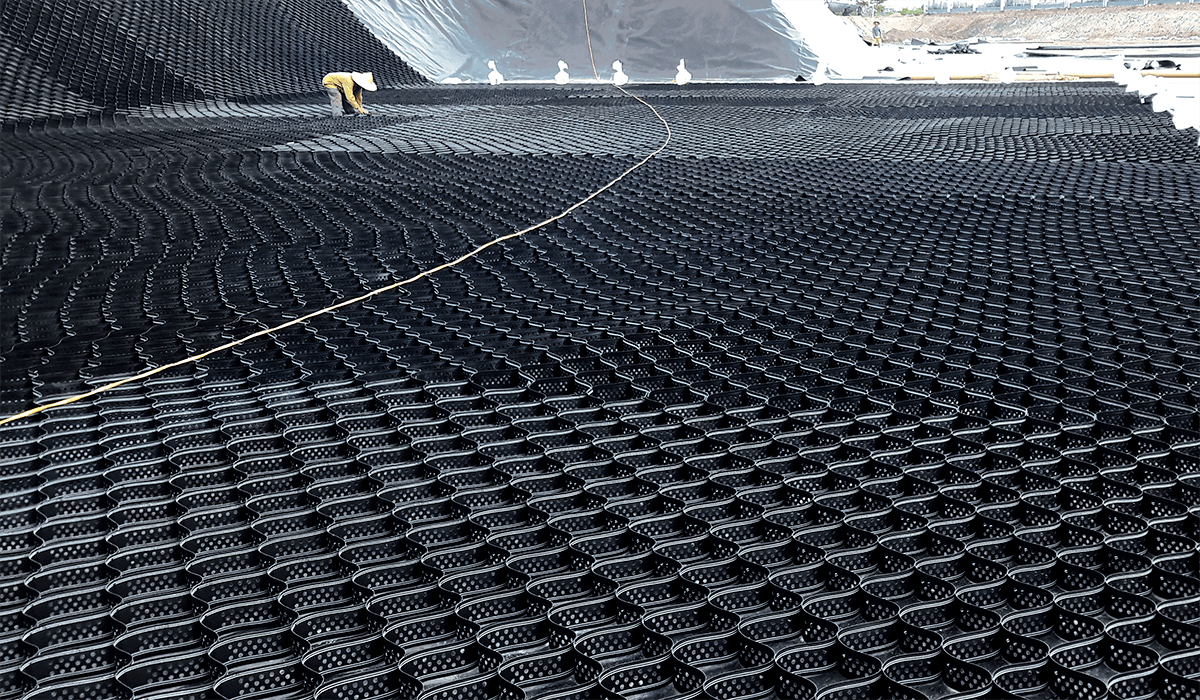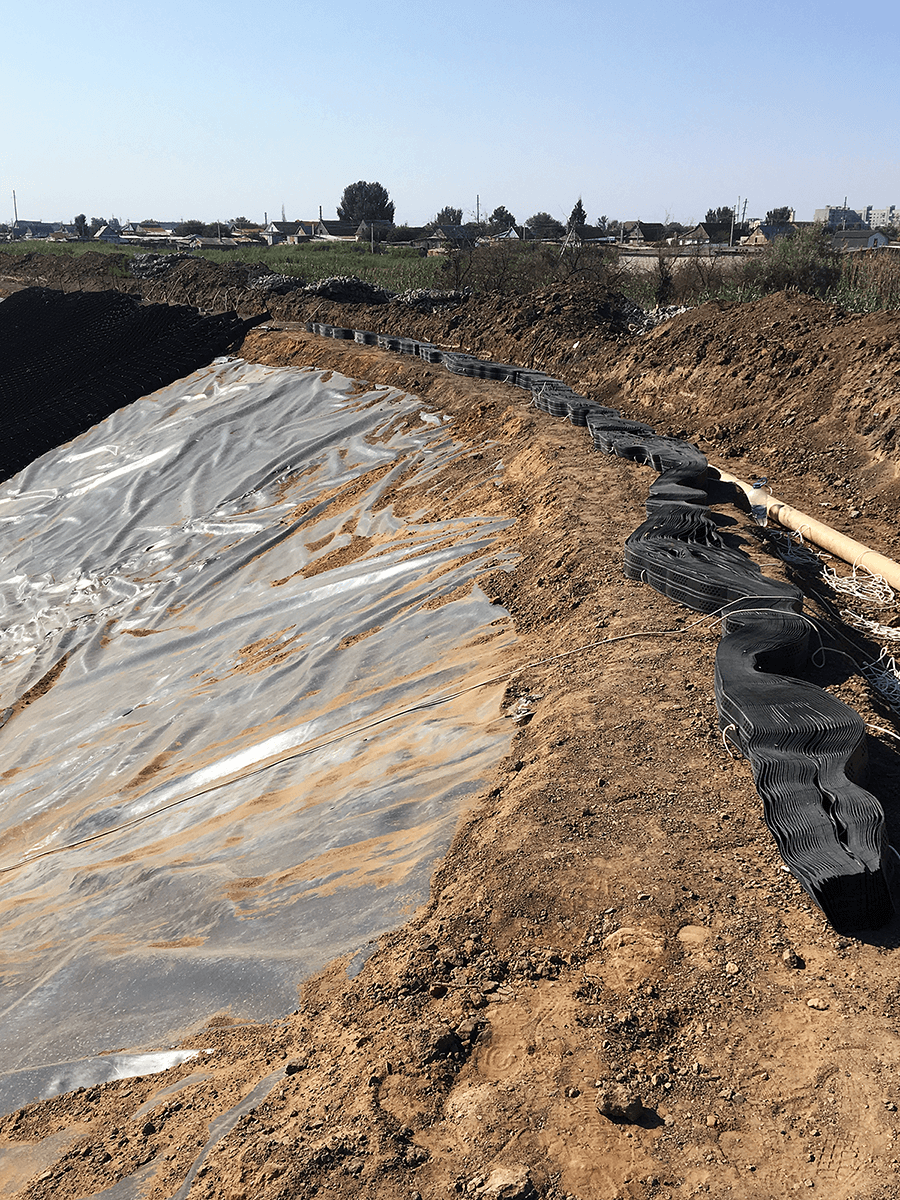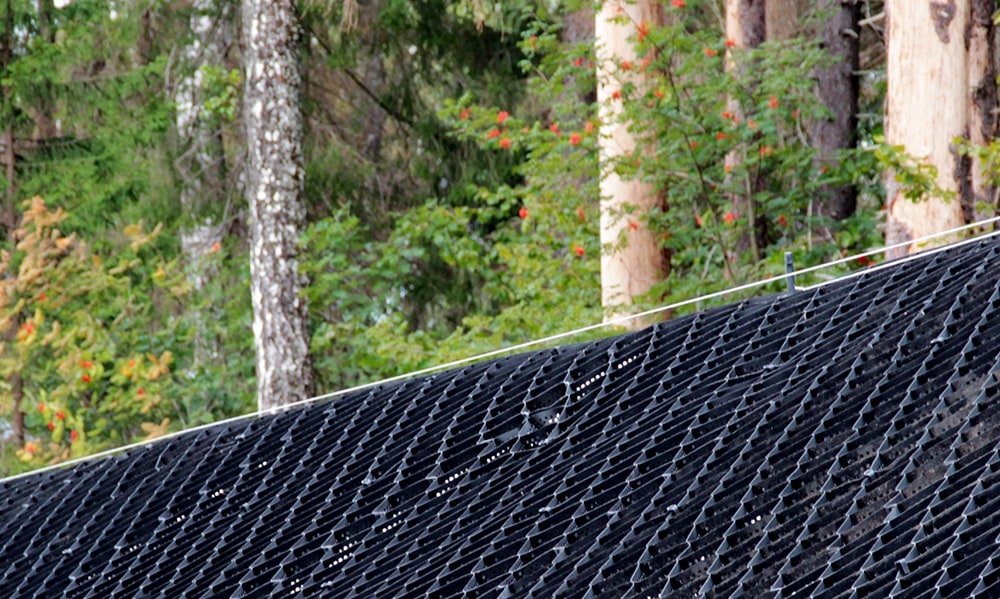GEOMEMBRANE: WHAT? WHERE? WHAT FOR?
This is the primary purpose of a geosynthetic material called geomembrane. So, let’s look at what a geomembrane is, the properties of this material, and where it is used.
WHAT IS GEOMEMBRANE?
GEOMEMBRANE is a geosynthetic material that provides reliable and durable waterproofing in building structures for various purposes: industrial and civil, geotechnics and environmental engineering.
Geomembrane is a continuous polymer sheet of various thicknesses with a smooth or textured surface. Texturing can be one-sided or two-sided. he textured surface provides better adhesion of the GEOMEMBRANE to the base. Since this fabric has a high coefficient of friction, it can be mounted at a great angle. Therefore, textured GEOMEMBRANES are suitable for use on steep slopes, as well as for waterproofing bases of complex geometric shapes, and for use in earthquake-prone areas.

Geomembrane protected with the appliance of reinforced geocell GEOCORD® filled with concrete B22,5, F150, W4.
The properties of geomembranes differ depending on the raw material it was made from:
HDPE is the designation for high-density low-pressure polyethylene. It is hard and durable, resistant to mechanical stress, stretching and deformation. It can be used at temperatures from -50 ° C. HDPE geomembranes are used on large flat areas (in the construction of artificial reservoirs, reservoirs for oil products and other liquid chemically active substances, as well as in the construction of dams and dams).
LLDPE or linear low-density polyethylene is soft and elastic, can be used at extremely low temperatures (down to -120° C), resistant to deformation. Due to such impressive properties, HDPE geomembranes are used on difficult, uneven surfaces, on unstable soils, for waterproofing underground structures, in permafrost conditions.

Geomembrane protected with the appliance of reinforced geocell GEOCORD® filled with concrete B22,5, F150, W4.
PROPERTIES OF THE GEOMEMBRANE

Geomembranes share the traditional characteristics of geosynthetics: they are durable and economical. And here is a complete list of the advantages:
- Durability
- Elasticity
- Environmental friendliness
- Durability
- Easy installation
- Resistance to mechanical damage
- Resistance to temperature changes
- Resistance to aggressive media (acids/alkalis with pH from 0.5 to 14)
- Resistance to microorganisms
- Resistance to UV radiation
- The service life of the geomembrane is 25 to 80 years, depending on the operating conditions.
WHERE IS THE GEOMEMBRANE APPLIED?
Of course, impressive technical characteristics and economic benefits lead to a wide range of applications for this geosynthetic material:
- Creation of artificial reservoirs
- Waterproofing of landfills for solid waste and software
- Waterproofing of landfills for snow disposal
- Waterproofing of granaries, silos
- Creation of a protective filter for oil storage facilities and oil pipelines
- Creation of a protective shield for copper and gold heap leaching pads
- Waterproofing of ash dumps
- Waterproofing of burial grounds, nuclear and other toxic waste, including agricultural and industrial enterprises, during road construction and repair works
- Waterproofing of dams, canals
- Waterproofing of basements, tunnels and other underground structures
- Waterproofing of foundations
- Construction of hydrometallurgical sites
- Construction of roads and airfields
HOW TO CHOOSE A GEOMEMBRANE?
Our specialists will prepare a calculation and select the appropriate material, taking into account the individual characteristics of your project. Contact us by phone +7 (499) 673-37-81 (ext. 502) or send a request to export@presto.ru.
We also suggest that you familiarize yourself with real-life cases of PRESTORUS geomembrane application in a special section of our website (you can filter projects by material): /realizovannyie-proektyi/

 About Us
About Us 






